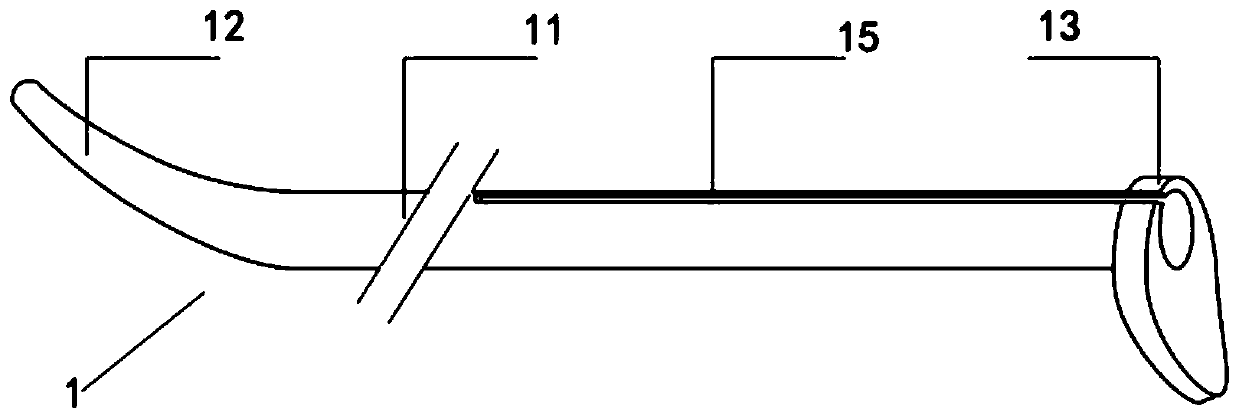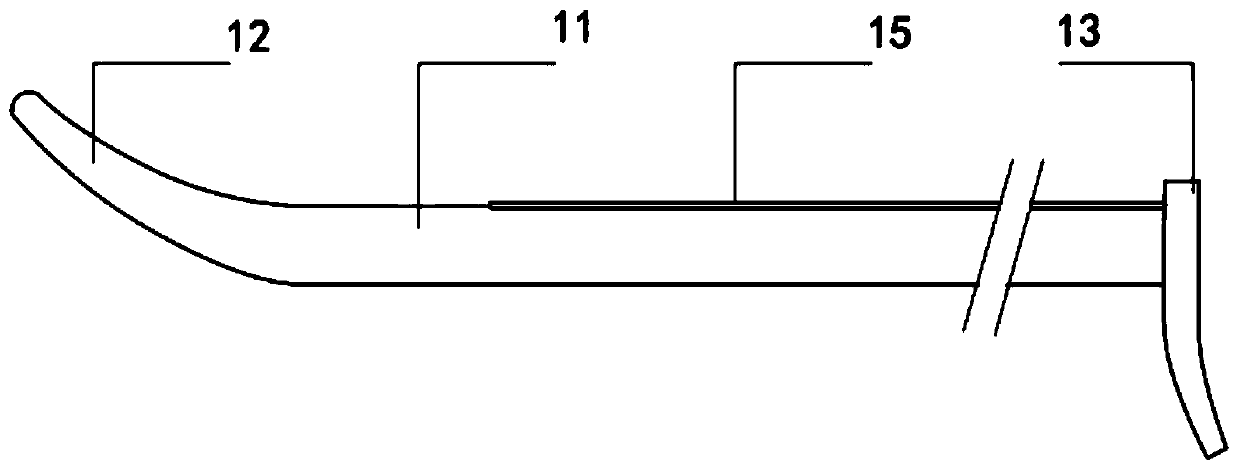Auxiliary catheter
A catheter and guiding catheter technology, applied in the medical field, can solve the problems of radial artery intima injury, inaccurate curative effect, increase patient costs, etc., achieve the effect of reducing radial artery complications, avoiding femoral artery puncture, and reducing radial artery injury
- Summary
- Abstract
- Description
- Claims
- Application Information
AI Technical Summary
Problems solved by technology
Method used
Image
Examples
Embodiment 1
[0091] Female, 75 years old, with coronary heart disease, diabetes, hypertension, underwent coronary angiography through the radial artery, showing that the right coronary artery was severely stenotic by 90%; the J-shaped guide wire was routinely kept to the aortic sinus; the guide catheter 2 was sent along the guide wire 3 to the aortic sinus Near the radial artery, high resistance, severe pain in the patient's forearm, withdrawal of the guiding catheter, pain relief. Diagnosed as radial artery spasm.
[0092] 1. Insert the auxiliary catheter 1 into the guide catheter 2 through the tail end of the guide catheter 2 (Y valve), and the length of the head of the auxiliary catheter 1 beyond the guide catheter 2 is 5 cm;
[0093] 2. Send the assembled guide catheter 2 and auxiliary catheter 1, along with the guide wire 3, forward synchronously, and reach the ascending aorta through the stenotic segment of the radial artery;
[0094] 3. Fix the guide wire 3, withdraw the auxiliary ...
Embodiment 2
[0099] Male, 38 years old, with coronary heart disease, angina pectoris, high blood pressure, and hyperlipidemia; coronary angiography performed through the radial artery showed severe stenosis of 99% in the anterior descending artery; 90% severe stenosis of the middle and distal right coronary artery;
[0100] Coronary interventional therapy was performed three days later, and the guide catheter 2 was sent along the guide wire 3 to encounter obstruction near the radial artery. The patient had severe pain in the forearm, and the guide catheter 2 was withdrawn, and the pain was relieved. Diagnosed as radial artery spasm.
[0101] 1. Insert the auxiliary catheter 1 into the guide catheter 2 through the tail end of the guide catheter 2 (Y valve), and the head end of the auxiliary catheter 1 exceeds the length of the guide catheter 2 by 10 cm;
[0102] 2. Send the assembled guide catheter 2 and auxiliary catheter 1 along with the guide wire 3 forward synchronously, and reach the a...
PUM
 Login to View More
Login to View More Abstract
Description
Claims
Application Information
 Login to View More
Login to View More - R&D
- Intellectual Property
- Life Sciences
- Materials
- Tech Scout
- Unparalleled Data Quality
- Higher Quality Content
- 60% Fewer Hallucinations
Browse by: Latest US Patents, China's latest patents, Technical Efficacy Thesaurus, Application Domain, Technology Topic, Popular Technical Reports.
© 2025 PatSnap. All rights reserved.Legal|Privacy policy|Modern Slavery Act Transparency Statement|Sitemap|About US| Contact US: help@patsnap.com



